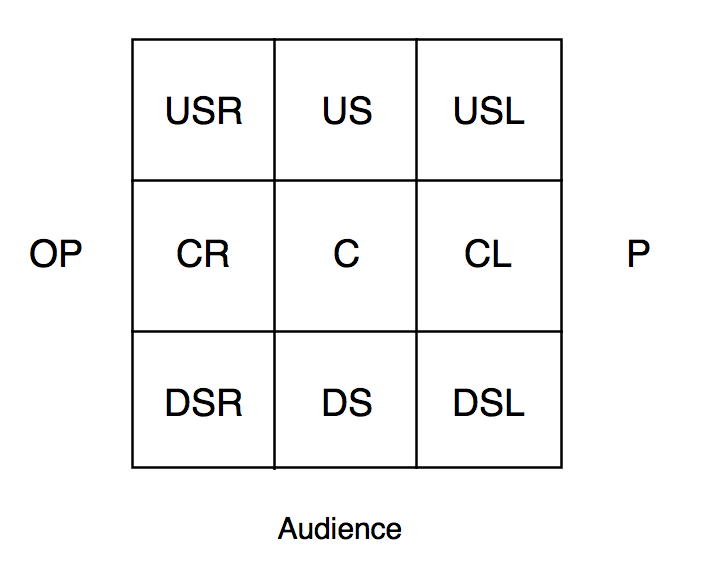12/2/14 Week 2
 |
Thrust Stage
|
For a warmup up today, we had to come up with a short (20 second) scene in small groups, using the "You shouldn't talk to your mother like that" and space (from the elements of drama) to create tension within the scene. We then played with the spacing of the actors within the scene and found that this changed the relationship between the actors, and the relationship between the actors and the audience. For example, in the scene between Jessie, Bailey and Amy- Amy moved downstage and Bailey moved far upstage right: this created not only physical but also psychological distance between the two actors. When Jessie came into the scene she entered from upstage left right next to Amy- this showed that the two actors had a closer relationship. Also, the fact that Bailey was placed near the back makes the audience sympathise with Amy because she is much closer to them. Therefore, the relevance of this exercise was to show us how space affects the mood of the scene, the relationship between actors, and the relationship between the audience and the actors.
 |
Arena Stage
|
We then got into larger groups and made up a different scene with the stimulus "disrespecting someone." We had to perform this scene on one of the two stages that we were learning about today- the Thrust or the Arena. The thrust stage has the main body of a Proscenium stage with an apron that allows action to be viewed from three audience perspectives. The Arena stage is a stage that can be viewed by the audience from 360˚- this means there are no entrances and exits covered by wings, meaning that performances on Arena stages tend to shy away from realism, as the stage allows for a more abstract and unique performance style.
The desired outcome of this activity was to successfully perform a scene using the stimulus and using the performance space given. My group performed as if we were on a thrust stage. We performed a scene where an operation was taking place in a hospital, during the operation the assistance runs outside to get equipment but is faced with an emergency so insists that the surgeon come and help quickly. While the surgeon is gone, a bystander steps in to complete the surgery, but obviously has no medical training, they "disrespect" the person by doing the wrong operation. A family member of the patient discovers the fake doctor and tensions rise. I feel that we successfully used the thrust stage to create focus by having the main action (the fake doctor doing the operation) pushed out towards the audience while in the background there was still action (the doctor and assistant trying to address the emergency.) We created tension between the characters by having the doctor be very impatient with his nervous assistant and by having a family member discovering the fake doctor in the act.
Another group performed on an arena stage, which utilised the elements of drama by allowing multiple conversations to happen at once, which can aid in building tension. It also allows the scene to have a chaotic mood as so much is happening at once. One disadvantage of the arena stage was that in many instances there was actors with their backs to the audience as there is 360˚ of audience surrounding them.












